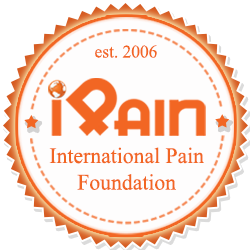Even in the rush of modern living, the body keeps score. There’s a quiet rebellion that happens when people ignore their own well-being: tension creeps into shoulders, sleep gets lighter, digestion misfires, and moods start to fray. Health doesn’t have to be complicated, and contrary to every marketing campaign selling instant transformation, it doesn’t require a massive overhaul. A more effective strategy begins with small, steady acts that address the body from head to toe—rituals that don’t feel like chores, but like returning home to yourself.
Scalp Stimulation: More Than a Haircare Habit
There’s something oddly therapeutic about giving the scalp a little more attention. A quick morning brush or a minute of massaging while shampooing can awaken circulation and reduce stress more than most people expect. This part of the body is often ignored outside of grooming routines, but it’s deeply wired into the nervous system, meaning it can shift someone from a frantic mindset into a more grounded space. Making this a mindful moment instead of a rushed task builds in an easy dose of nervous system regulation before the day even begins.
Eyes That Get a Break See Better Days
Screens are stealing more than time; they’re silently sapping energy through strained vision and mental fatigue. The eyes need regular resets and checkups, especially in a world where digital life never really pauses. Looking up from a screen every 20 minutes and focusing on something far away isn’t just good practice—it’s one of those rare habits that instantly improves energy and clarity. A better rested gaze carries over into better posture, fewer headaches, and even a calmer face, which often shows the first signs of burnout.
Fuel That Builds From the Inside Out
Eating well doesn’t have to mean adhering to rigid food rules or counting every bite. It starts by prioritizing whole foods—those that resemble where they came from—and building meals around color, texture, and variety. One easy upgrade includes adding super greens made with organic vegetables and free from artificial flavors and sweeteners, which can complement a busy routine without sacrificing quality. When purchased in powder form, these greens offer the flexibility of blending into smoothies that taste good while actually supporting the nutritional value of the best greens powders.
Neck and Shoulders: Where Modern Tension Lives
Stress has a preferred address, and it’s somewhere between the ears and the upper spine. That area tends to stiffen after hours hunched over desks, scrolling through phones, or carrying life’s mental weight. Simple range-of-motion exercises—neck circles, shoulder rolls, or even standing stretches—can ease the kind of stiffness that builds silently over time. Just two minutes of this, twice a day, becomes a subtle act of rebellion against the sedentary grind and a reliable source of relief that accumulates across weeks.
Lungs Deserve Deeper Breaths
Breathing is automatic, which makes it easy to overlook—but also the fastest tool available to shift how the body feels. Shallow breathing, which most people default to without realizing, reinforces anxiety and fatigue. A few deep belly breaths before meals or during stressful moments works like a reset button, sending signals to the brain that it’s safe to relax. It doesn’t require a yoga mat or candlelit room, just a willingness to pay attention to what breath is doing and where it’s being held.
Hips and Feet: Anchors of Everyday Movement
Mobility starts low—often in the hips and feet, where stability and power originate whether someone’s walking to the store or hauling groceries up stairs. Yet, they’re usually addressed only when pain shows up. Building small rituals like foot rolling with a ball, ankle circles while brushing teeth, or even squatting for a few seconds during a break can reinvigorate parts of the body that quietly carry everything. These muscles and joints respond quickly to attention, offering better balance and less stiffness in exchange for minimal effort.
Health isn’t a finish line, nor is it a list of tasks to conquer. The most powerful strategies are those that feel effortless because they align with how people actually live—woven into daily rhythms instead of bolted on as obligations. When the body is treated like a whole system, from the scalp to the soles, everything works better together. And when small acts of care become second nature, the everyday starts to feel a little more like a place worth inhabiting, not just surviving.
Discover the power of community and empowerment at iPain International Pain Foundation, your go-to resource for chronic pain support, education, and advocacy. Join us in raising awareness and find hope through our engaging projects and free resources!
Author: Justin Bennett
Published by: International Pain Foundation, iPain Blog, Team iPain

